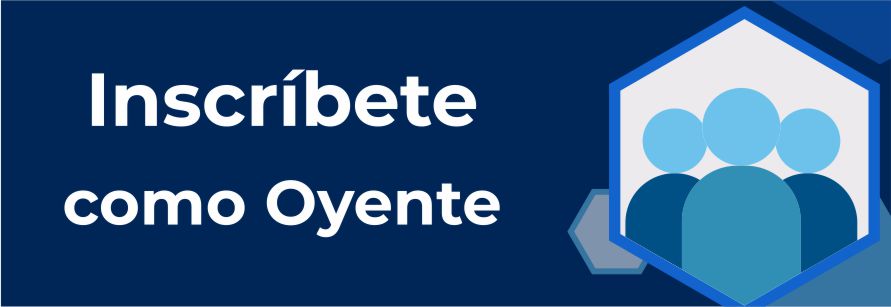Importancia de la didáctica universitaria en la formación de profesionales en educación
Resumen
Este artículo de revisión examina la importancia de la didáctica universitaria en la formación de profesionales en educación, con un enfoque particular en cómo diversas teorías educativas y metodologías innovadoras pueden enriquecer la enseñanza y el aprendizaje en la educación superior. Utilizando la metodología PRISMA para la revisión sistemática, se realizó una búsqueda exhaustiva en bases de datos académicas, seleccionando estudios relevantes que exploran la aplicación de teorías educativas, el impacto en la formación de educadores, innovaciones pedagógicas y la integración de tecnología en la didáctica universitaria. Los hallazgos principales indican que teorías como el constructivismo, cognitivismo y socioconstructivismo son cruciales para desarrollar habilidades críticas y reflexivas en los educadores. Además, innovaciones como el aprendizaje invertido y la realidad aumentada han demostrado mejorar significativamente la participación y el rendimiento estudiantil. La tecnología, especialmente plataformas colaborativas y herramientas multimedia, juega un papel esencial en la facilitación de métodos pedagógicos adaptativos y personalizados. Estos resultados subrayan la necesidad de integrar teorías educativas sólidas y tecnología avanzada para formar educadores competentes y versátiles en el siglo XXI.
Descargas
Citas
Bandura, A. (1986). Social foundations of thought and action: A social cognitive theory. Prentice-Hall.
Bates, T. (2005). Technology, e-learning and distance education. Routledge.
Bloom, B. S. (1956). Taxonomy of educational objectives, Handbook I: The cognitive domain. David McKay Company Inc.
Bruner, J. (1996). The culture of education. Harvard University Press.
Dewey, J. (1938). Experience and education. Kappa Delta Pi.
Freire, P. (1970). Pedagogy of the oppressed. Herder and Herder.
Gagné, R. M., & Briggs, L. J. (1979). Principles of instructional design (2nd ed.). Holt, Rinehart & Winston.
García, L. (2019). Cognitive approaches to learning in the classroom. Sage Publications.
Johnson, D. W., & Johnson, R. T. (1999). Learning together and alone: Cooperative, competitive, and individualistic learning (5th ed.). Allyn and Bacon.
Kolb, D. A. (1984). Experiential learning: Experience as the source of learning and development. Prentice Hall.
López, M., & Hernández, F. (2018). Socio-constructivism in higher education. Journal of Educational Theory, 34(2), 203-219.
Mungarro-Matus, J. E., & Mada-Loreto, R. (2024). Mercado de trabajo de personas instructoras de Actividades Rítmicas Masivas en Hermosillo, México. Estudios Y Perspectivas Revista Científica Y Académica , 4(1), 350–367. https://doi.org/10.61384/r.c.a.v4i1.103
Avila, E., Ávila Romano , R., & Fabiano de Abreu Agrela Rodrigues. (2024). Como retardar o envelhecimento cerebral: Uma análise neurocientífica. Revista Científica De Salud Y Desarrollo Humano, 5(1), 84–95. https://doi.org/10.61368/r.s.d.h.v5i1.76
Mungarro-Matus, J. E., & Mada-Loreto, R. (2024). Mercado de trabajo de personas instructoras de Actividades Rítmicas Masivas en Hermosillo, México. Estudios Y Perspectivas Revista Científica Y Académica , 4(1), 350–367. https://doi.org/10.61384/r.c.a.v4i1.104
Fernández C., F. (2024). Determinación De Erodabilidad En Áreas De Influencia Cuenca Poopo Región Andina De Bolivia. Horizonte Académico, 4(4), 63–78. Recuperado a partir de https://horizonteacademico.org/index.php/horizonte/article/view/19
Medina Nolasco, E. K., Mendoza Buleje, E. R., Vilca Apaza, G. R., Mamani Fernández, N. N., & Alfaro Campos, K. (2024). Tamizaje de cáncer de cuello uterino en mujeres de una región Andina del Perú. Arandu UTIC, 11(1), 50–63. https://doi.org/10.69639/arandu.v11i1.177
Da Silva Santos , F., & López Vargas , R. (2020). Efecto del Estrés en la Función Inmune en Pacientes con Enfermedades Autoinmunes: una Revisión de Estudios Latinoamericanos. Revista Científica De Salud Y Desarrollo Humano, 1(1), 46–59. https://doi.org/10.61368/r.s.d.h.v1i1.9
Martínez, R. (2021). Augmented reality in education: A new teaching paradigm. Springer.
Montessori, M. (1912). The Montessori method. Schocken Books.
Piaget, J. (1952). The origins of intelligence in children. International Universities Press.
Prensky, M. (2001). Digital natives, digital immigrants. On the Horizon, 9(5), 1-6.
Rogers, C. R. (1969). Freedom to learn. Charles E. Merrill Publishing Co.
Schön, D. A. (1983). The reflective practitioner: How professionals think in action. Basic Books.
Siemens, G. (2005). Connectivism: A learning theory for the digital age. International Journal of Instructional Technology and Distance Learning, 2(1), 3-10.
Smith, P. L., & Ragan, T. J. (1999). Instructional design. Wiley.
Smith, J., & Ragan, T. J. (2020). Constructivist instruction: Success or failure?. Routledge.
Sweller, J. (1988). Cognitive load during problem solving: Effects on learning. Cognitive Science, 12(2), 257-285.
Vygotsky, L. S. (1978). Mind in society: The development of higher psychological processes. Harvard University Press.
Dewey, J., & Freire, P. (2020). Dialogues on the role of critical pedagogy in higher education. University of Chicago Press.
Johnson, D. W., & Johnson, R. T. (2021). Cooperative learning in higher education: Across the disciplines, across the academy. Stylus Publishing, LLC.
García, L. (2019). Enhancing university teaching and learning through cognitive strategies. Routledge.
Derechos de autor 2024 Federico Ubaldo Fernandez Sutta , Edison Raul Ccahua Valle, Carolina Galiano Campo, Justina Cipriana Carbajal Borda, Jaime Rivas Follano

Esta obra está bajo licencia internacional Creative Commons Reconocimiento 4.0.













.png)




















.png)
1.png)


